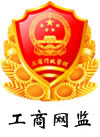All pet birds are smart and quick witted. Wild parrots fill their day with play, socializing, foraging for food, and preening each other. Did you know that some wile parrots fly miles up to 500 miles each day? Captive parrots usually do not have the opportunity for such varied and active stimulation causing them a great deal of frustration. Frustrated, bored parrots develop behavior problems like biting, screaming, and feather picking.
It's up to responsible parrot owners to provide stimulation through socialization and parrot bird toys, especially when you work outside of the home during the day. Your bird cage should be stocked with three to four novel bird toys per week to satisfy your parrots intellectual and emotional needs. You can alleviate boredom and the accompanying behavior problems that develop by offering your bird several parrot bird toys inside of it's cage. Rotate your parrot bird toys at least weekly to keep your parrot mentally stimulated and entertained. Parrots don't just want bird toys, they need them.

Size: Always choose the correct size parrot bird toy for your parrot. Small bird toys pose a choking hazard for larger parrots while large parrot toys can be useless and dangerous to small birds.
Beads and Acrylics: These components are considered safe for parrot bird toys as long as they are properly sized so that your bird does not ingest broken parts.
Plastic Chain: Make sure that you choose an appropriate size of plastic chain for your parrot bird toys.
Bells: Parrots love to play with bells. Generally, bird bells should be used under supervision because many medium to larger birds can easily remove the clappers posing a choking hazard. All bells on parrot bird toys should be nickel plated to prevent zinc poisoning. We recommend Wrought Iron Powder Coated Bells, especially for medium to large parrot bird toys.
Metal Components: Stainless steel is the metal of choice for parrot bird toys, but it is expensive. Make sure that all metal parts are nickel plated to avoid metal (zinc and lead) toxicity. Round rings should be too large or too small for your birds beak, head, and toes to become caught in. Split key rings should be removed from all parrot bird toys as their spring action can pinch beaks, tongues and toes.
Links: Only buy parrot toys that use Quick Links (or "C" clamps) and closed link chain, where each individual link is welded shut. Avoid parrot bird toys made with "S" links, bent wires, shower curtain hangers or open link chains as these can easily trap your birds beak, tongue, toes or nails. Most large parrots enjoy unscrewing quick-links should use safe toy holder's such as Hangin' Round Toy Holders from Expandable Habitat's. These parrot bird toy hangers are impossible to open and, therefore, they prevent accidental strangulation. Never use spring loaded clips in any parrot bird toy.
Leather: All bird toys should be made from untreated or vegetable dyed leather. Leather strips should be monitored for length so that your bird doesn't get it wrapped around it's neck If your bird has removed the parrot bird toy parts that were tied to the leather strip, cut the leather strip shorter
Rope: Only sisal or cotton rope should be used in parrot bird toys. Always inspect rope toys on a regular basis. Cut frays that could accidentally strangle your bird. Even a 2" fray can get caught and strangle your parrot. Cotton rope bird toys are especially prone to fraying and should be used only under direct supervision. When the end of a piece of rope begins to unravel, clip it off.
Wood: All wood should be untreated or colored with a nontoxic coloring such as Kool-aid, Jello or a commercial variety found to be "bird safe".
Author: Betty wang
|
